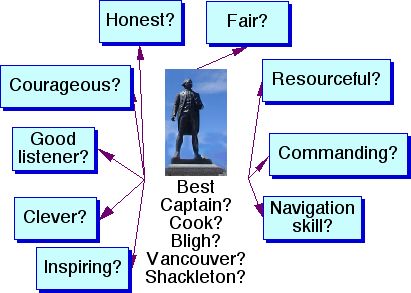- Which questions are well answered?
- Which ones require further investigation?
- Any new questions?
|
|
Visit OneQuestioning & Planning |
|||||||||||||||||||||||||||||||||||||
|
1. Introducing the Question, Choice or Problem (Insert here a link to a provocative news story, to pictures or to some other item on the Net which will stir students to recognize a problem or choice from the world around them.) If you were asking them to come up with a plan to guard a town against a natural disaster such as an earthquake, for example, you might send them to The January 17, 1995 Kobe Earthquake a site on natural disasters provided by EQE International, an industrial design firm. This site combines dramatic photographs with interesting text and maps. Looking for newpaper articles? Here's a global listing (Insert an explanation of the key question, choice or problem to be investigated.) Example: "We have evidence that good planning can reduce the injuries, death and destruction which result from serious earthquakes. Your team is preparing a report for a California town with high earthquake risk suggesting the dozen most important steps which should be built into an Earthquake Preparedness Plan." It is your job to identify such a town, find the 20-30 most important strategies towns might employ and then customize your plan to fit your town. You will create a multimedia report for the town council explaining why you recommend the dozen steps you have selected." 2. Graphic Organizers and Subsidiary Questions These kinds of questions require some structured approach to help guide note-taking and information gathering. Students should be required to organize their questions with a cluster diagram or a decision-making grid like the ones you saw in the introductory presentation.
You can use the Table Menu to insert a table for a decision-making grid.
(Insert here an example of a cluster diagram for a different question and include instructions explaining how to create a cluster diagram with subsidiary questions to match this investigation. Make sure you have taught them how to form Telling Questions. Consider inserting a grid like the ones described in this article. Give students a choice of word processing or a graphics program like Inspiration to create their lists of questions.) 3. Assessment (Insert here the assessment procedures you will employ. Are there any rubrics you can share such as the Research Process Rubric , Effective Collaborator Rubric or the Multimedia Mania Rubrics?) 4. Time-Line (Provide an overview of the project - what will happen on each one of their visits.)
|
||||||||||||||||||||||||||||||||||||||

